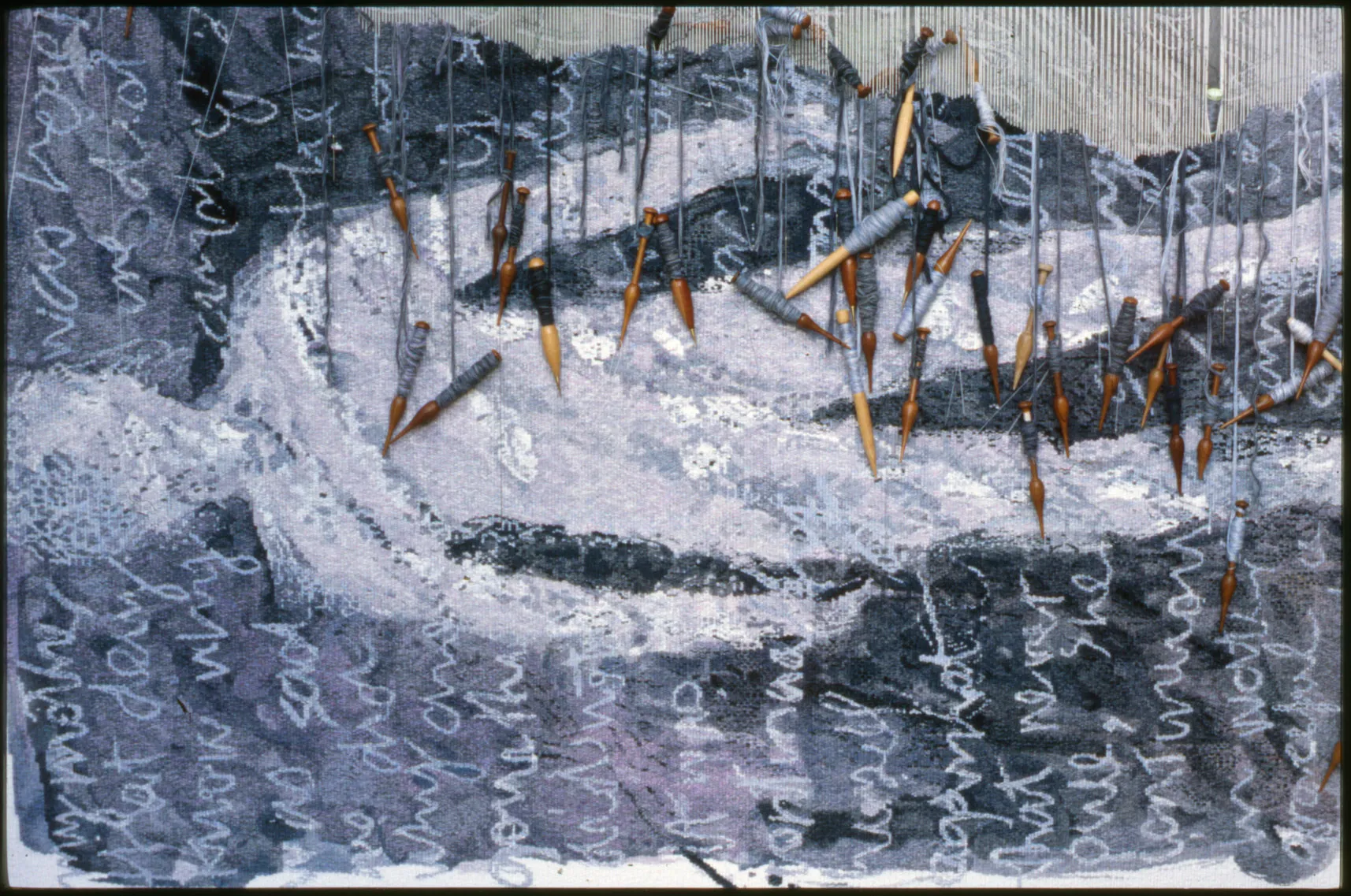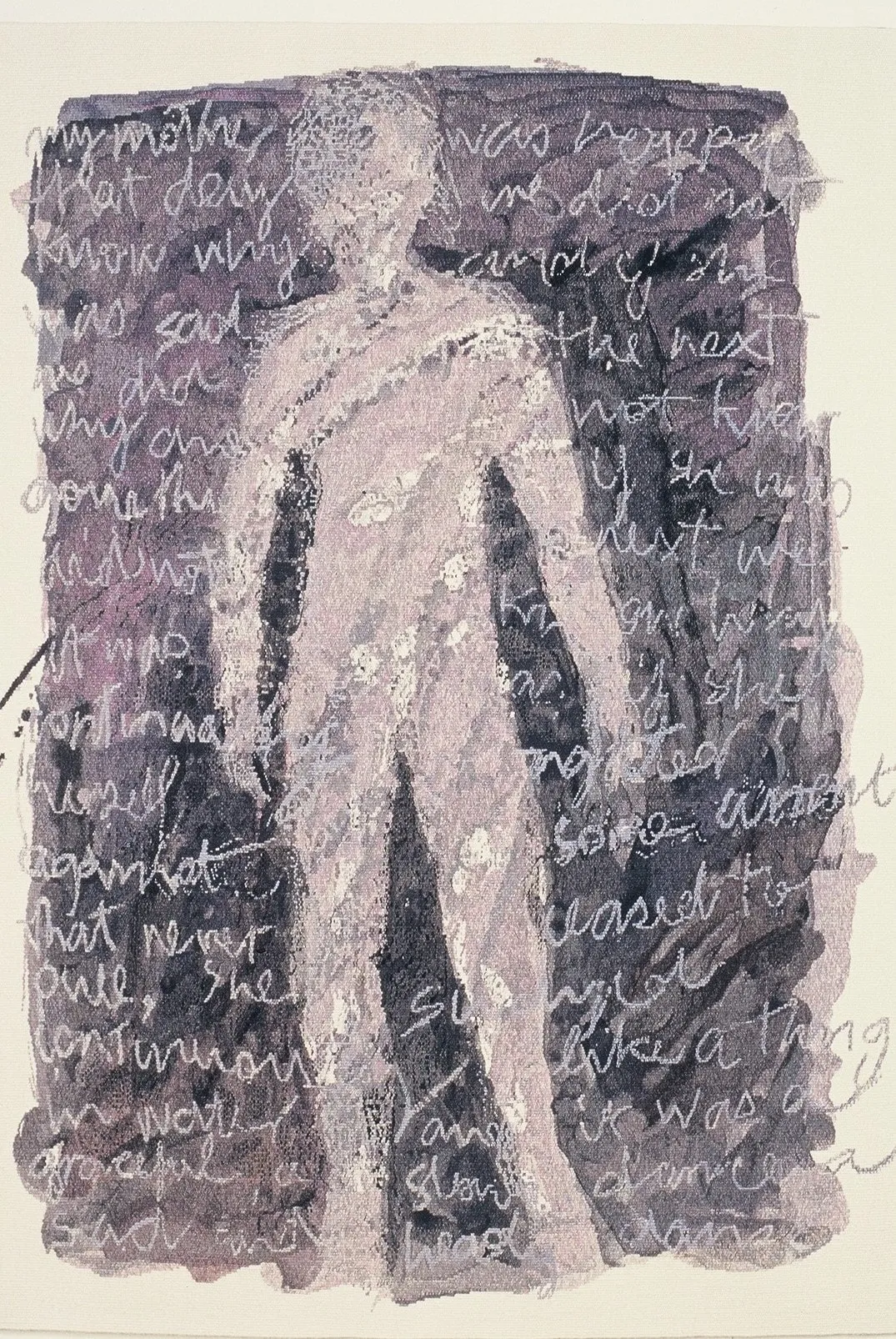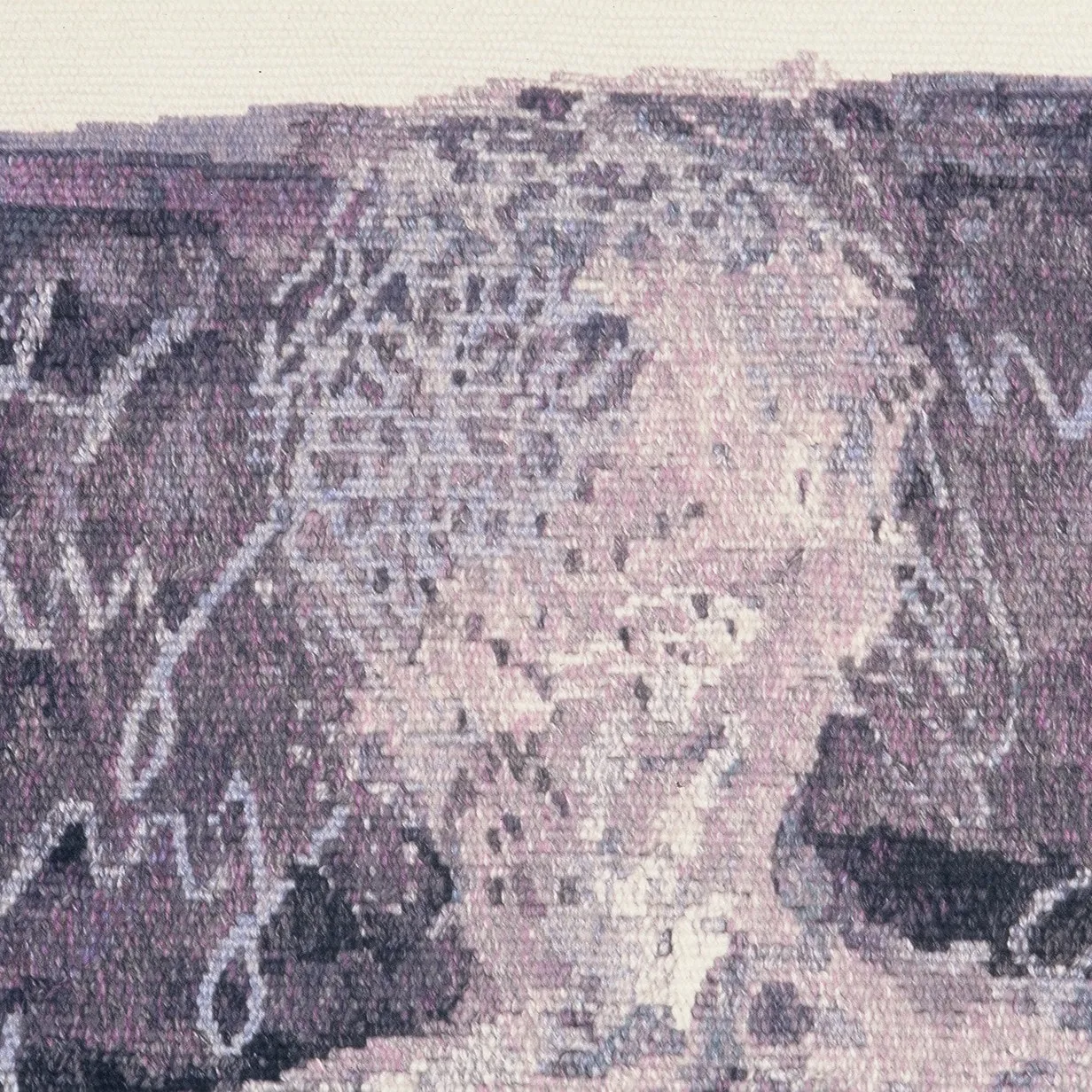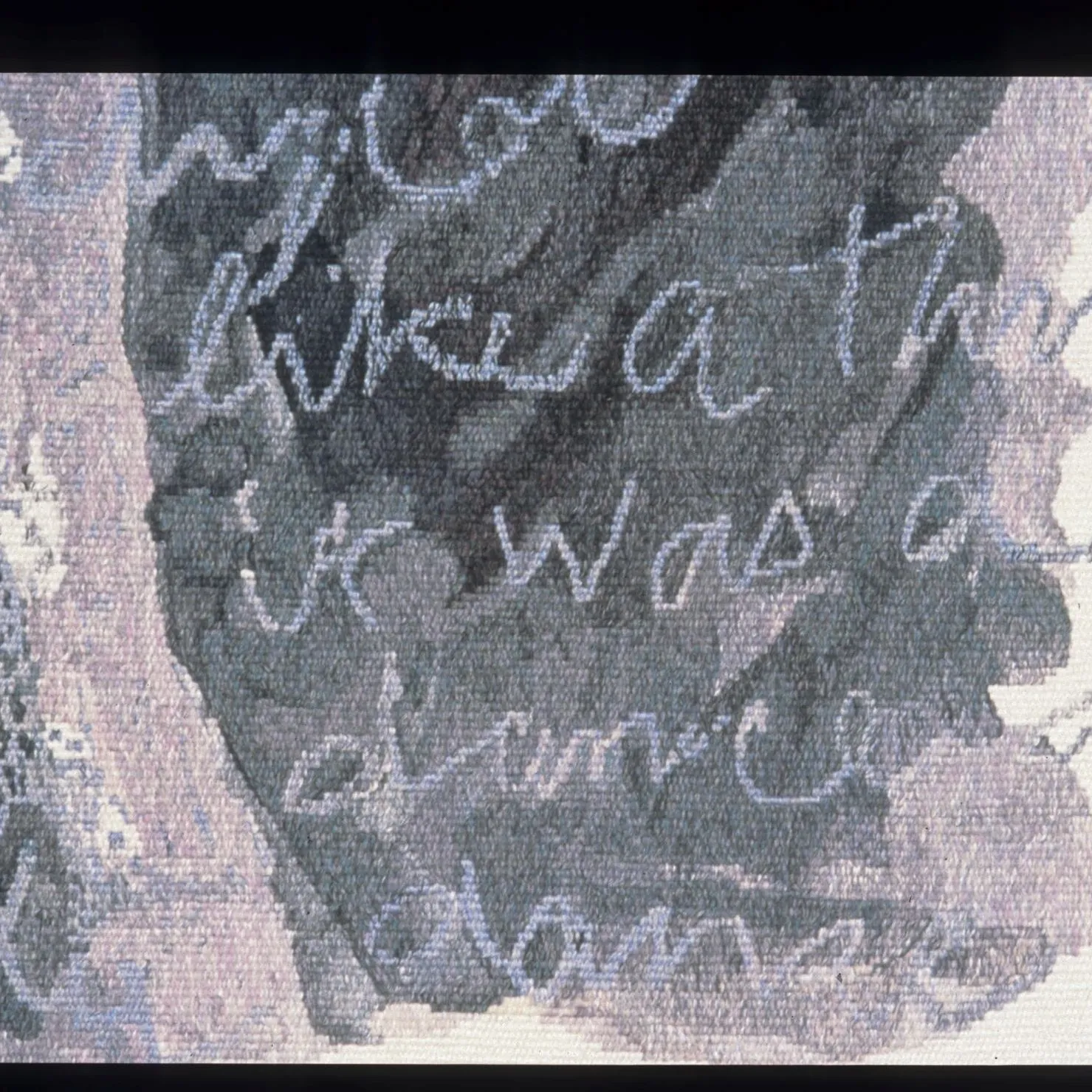1995 - 1996 Daughter
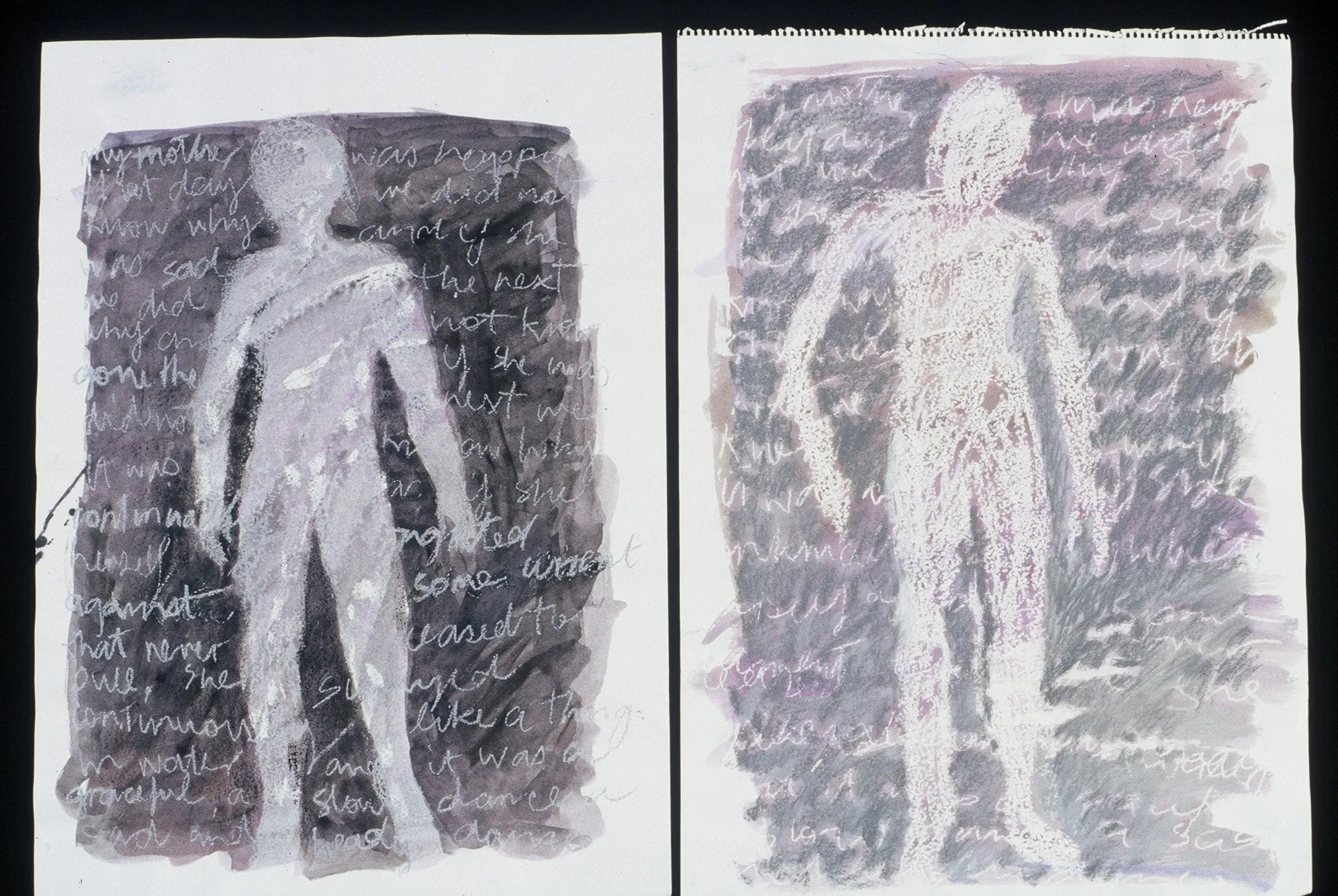
The tapestry ‘Daughter’ is interpreted from watercolour drawings I made of my daughter as a child, her image floating in front of a text by the Canadian writer Marilynne Robinson taken from her novel ‘Housekeeping’.
'If my mother was happy that day we did not know why. And if she was sad the next, we did not know why. And if she was gone the next, we did not know why. It was if she righted herself continually against a current that never ceased to pull. She swayed continuously like a thing in water, and it was a graceful, a slow dance, a sad heady dance.'
My mother died at 49 when I was 23. In weaving the tapestry when I neared the age of her death, I was trying to articulate my continuing sense of loss, and, having had a daughter myself, my realization of the gulf of incomprehension that can separate the child from the parent. As I wove the image, I became aware that in this work, I occupied the space of both mother and daughter. The long, slow process of weaving became a form of reparation, building the image, weaving the words, creating a dense, physical structure to repair a little of the anguish of that early loss.
